Related Research Articles
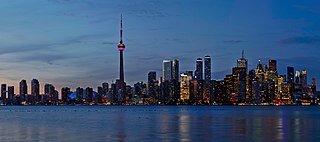
The economy of Canada is a highly developed mixed-market economy. It is the 8th largest GDP by nominal and 15th largest GDP by PPP in the world. As with other developed nations, the country's economy is dominated by the service industry which employs about three quarters of Canadians. Canada has the third-highest total estimated value of natural resources, valued at Int$33.98 trillion in 2019`. It has the world's third largest proven oil reserves and is the fourth largest exporter of crude oil. It is also the fifth largest exporter of natural gas.
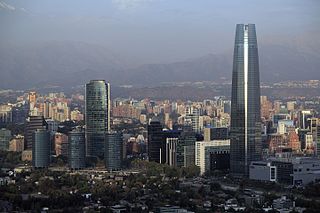
The Economy of Chile is a market economy and high-income economy as ranked by the World Bank. The country is considered one of South America's most prosperous nations, leading the region in competitiveness, income per capita, globalization, economic freedom, and low perception of corruption. Although Chile has high economic inequality, as measured by the Gini index, it is close to the regional mean.
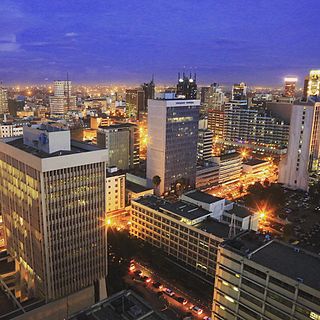
The Economy of Kenya is a market-based economy with a few state enterprises. Major industries include agriculture, forestry, fishing, mining, manufacturing, energy, tourism and financial services. As of 2020, Kenya had the third largest economy in Sub-Saharan Africa, coming behind Nigeria and South Africa.

The economy of Morocco is considered a relatively liberal economy, governed by the law of supply and demand. Since 1993, Morocco has followed a policy of privatization of certain economic sectors which used to be in the hands of the government. Morocco has become a major player in African economic affairs, and is the 5th largest African economy by GDP (PPP). The World Economic Forum placed Morocco as the 1st most competitive economy in North Africa, in its African Competitiveness Report 2014–2015.
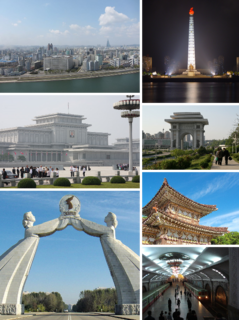
The economy of North Korea is a centrally planned economy, following Juche, where the role of market allocation schemes is limited, although increasing. As of 2022, North Korea continues its basic adherence to a centralized command economy. There has been some economic liberalization, particularly after Kim Jong-un assumed the leadership in 2012, but reports conflict over particular legislation and enactment. Since the 1990s, informal market activity has increased, which the authoritarian regime has tolerated.
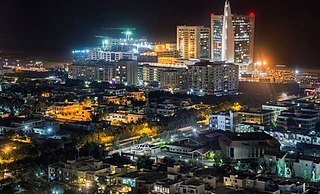
The economy of Pakistan is the 24th-largest worldwide in terms of GDP based on purchasing power parity (PPP). According to 2021 estimate, Country has population of 227 million people, the nominal GDP of Pakistan stands at US$347 billion with a nominal GDP per capita of US$1,562 ; its GDP based on PPP stands at US$1.468 trillion with a GDP (PPP) per capita of US$6,470.

The economy of Switzerland is one of the world's most advanced and highly-developed free-market economies. The service sector has come to play a significant economic role, particularly the Swiss banking industry and tourism. The economy of Switzerland ranked first in the world in the 2015 Global Innovation Index and third in the 2020 Global Competitiveness Report. According to United Nations data for 2016, Switzerland is the third richest landlocked country in the world after Liechtenstein and Luxembourg. Together with the latter and Norway, they are the only three countries in the world with a GDP per capita (nominal) above US$70,000 that are neither island nations nor ministates.

The economy of Mozambique has developed since the end of the Mozambican Civil War (1977–1992). In 1987, the government embarked on a series of macroeconomic reforms, which were designed to stabilize the economy. These steps, combined with donor assistance and with political stability since the multi-party elections in 1994, have led to dramatic improvements in the country's growth rate. Inflation was brought to single digits during the late 1990s, although it returned to double digits in 2000–02. Fiscal reforms, including the introduction of a value-added tax and reform of the customs service, have improved the government's revenue collection abilities.
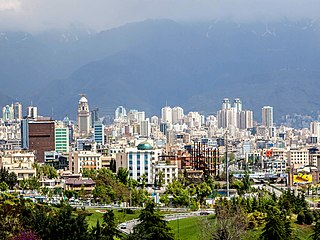
The economy of Iran is a mixed economy with a large state-owned sector and is the largest in the Middle East in terms of nominal GDP. It is the world's 23rd largest by purchasing power parity (PPP). Some 60% of Iran's economy is centrally planned. It is dominated by oil and gas production, although over 40 industries are directly involved in the Tehran Stock Exchange. The stock exchange has been one of the best performing exchanges in the world over the past decade. With 10% of the world's proven oil reserves and 15% of its gas reserves, Iran is considered an "energy superpower".
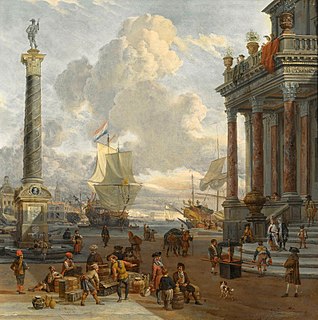
Import substitution industrialization (ISI) is a trade and economic policy that advocates replacing foreign imports with domestic production. It is based on the premise that a country should attempt to reduce its foreign dependency through the local production of industrialized products. The term primarily refers to 20th-century development economics policies, but it has been advocated since the 18th century by economists such as Friedrich List and Alexander Hamilton.
A subsidy or government incentive is a form of financial aid or support extended to an economic sector generally with the aim of promoting economic and social policy. Although commonly extended from the government, the term subsidy can relate to any type of support – for example from NGOs or as implicit subsidies. Subsidies come in various forms including: direct and indirect.
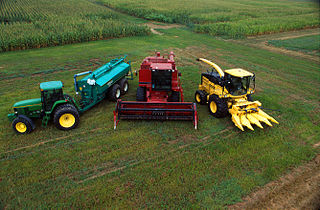
An agricultural subsidy is a government incentive paid to agribusinesses, agricultural organizations and farms to supplement their income, manage the supply of agricultural commodities, and influence the cost and supply of such commodities. Examples of such commodities include: wheat, feed grains, cotton, milk, rice, peanuts, sugar, tobacco, oilseeds such as soybeans and meat products such as beef, pork, and lamb and mutton.

The economy of India is a middle income developing market economy. It is the world's fifth-largest economy by nominal GDP and the third-largest by purchasing power parity (PPP). According to the International Monetary Fund (IMF), on a per capita income basis, India ranked 142nd by GDP (nominal) and 128th by GDP (PPP). From independence in 1947 until 1991, successive governments promoted protectionist economic policies, with extensive state intervention and economic regulation. This is characterised as dirigism, in the form of the License Raj. The end of the Cold War and an acute balance of payments crisis in 1991 led to the adoption of a broad economic liberalisation in India. Since the start of the 21st century, annual average GDP growth has been 6% to 7%, and from 2013 to 2018, India was the world's fastest growing major economy, surpassing China. Historically, India was the largest economy in the world for most of the two millennia from the 1st until the 19th century.

The economy of Serbia is a service-based upper middle income economy in Central Europe, with the tertiary sector accounting for two-thirds of total gross domestic product (GDP). The economy functions on the principles of the free market. Nominal GDP in 2022 is projected to reach $65 billion, which is $9,502 per capita, while GDP based on purchasing power parity (PPP) stood at $163.6 billion, which is $23,903 per capita. The strongest sectors of Serbia's economy are energy, the automotive industry, machinery, mining, and agriculture. The country's primary industrial exports are automobiles, base metals, furniture, food processing, machinery, chemicals, sugar, tires, clothes, and pharmaceuticals. Trade plays a major role in Serbian economic output. The main trading partners are Germany, Italy, Russia, China, and neighbouring Balkan countries.
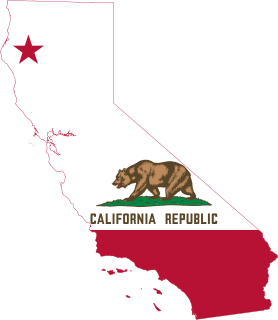
The economy of the State of California is the largest in the United States, with a $3.4 trillion gross state product (GSP) as of 2021. If California were a sovereign nation (2021), it would rank as the world's fifth largest economy, ahead of India and behind Germany. Additionally, California's Silicon Valley is home to some of the world's most valuable technology companies, including Apple, Alphabet Inc., and Meta Platforms. In total, over 10% of Fortune 1000 companies were based in California in 2018, the most of any state.

The economy of the Middle East is very diverse, with national economies ranging from hydrocarbon-exporting rentiers to centralized socialist economies and free-market economies. The region is best known for oil production and export, which significantly impacts the entire region through the wealth it generates and through labor utilization. In recent years, many of the countries in the region have undertaken efforts to diversify their economies.

Roughly one-third of Iran's total surface area is suited for farmland, but because of poor soil and lack of adequate water distribution in many areas, most of it is not under cultivation. Only 12% of the total land area is under cultivation but less than one-third of the cultivated area is irrigated; the rest is devoted to dryland farming. Some 92 percent of agricultural products depend on water. The western and northwestern portions of the country have the most fertile soils. Iran's food security index stands at around 96 percent.
The economic development in India followed socialist-inspired politicians for most of its independent history, including state-ownership of many sectors; India's per capita income increased at only around 1% annualised rate in the three decades after its independence. Since the mid-1980s, India has slowly opened up its markets through economic liberalisation. After more fundamental reforms since 1991 and their renewal in the 2000s, India has progressed towards a free market economy.
The trade relationship of the United States with Canada is the largest in the world. In 2016, the goods and services trade between the two countries totalled $627.8 billion. U.S. exports were $320.1 billion, while imports were $307.6 billion. The United States has a $12.5 billion trade surplus with Canada in 2016. Canada has historically held a trade deficit with the United States in every year since 1985 in net trade of goods, excluding services. The trade relationship between the two countries crosses all industries and is vitally important to both nations' success as each country is one of the largest trade partners of the other.

Prior to 1979, Iran's economic development was rapid. Traditionally an agrarian society, by the 1970s the country had undergone significant industrialization and economic modernization. This pace of growth had slowed dramatically by 1978 as capital flight reached $30 to $40 billion 1980 US dollars just before the revolution.
References
![]() This article incorporates public domain material from the Congressional Research Service document: Jasper Womach. "Report for Congress: Agriculture: A Glossary of Terms, Programs, and Laws, 2005 Edition" (PDF).
This article incorporates public domain material from the Congressional Research Service document: Jasper Womach. "Report for Congress: Agriculture: A Glossary of Terms, Programs, and Laws, 2005 Edition" (PDF).
- "Economics of the Food and Fiber System from the USDA's Amber Waves publication". Archived from the original on 2016-08-09. Retrieved 2022-01-11.
Notes
- ↑ "Archived copy" (PDF). Archived from the original (PDF) on 2012-03-20. Retrieved 2011-09-09.
{{cite web}}: CS1 maint: archived copy as title (link)